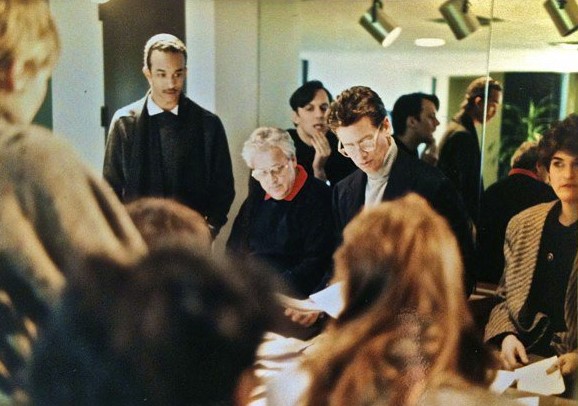Martin Cooper’s path has taken him from a childhood in the Deep South to Parsons School of Design to top jobs at Calvin Klein, Burberry, Belstaff, and Lands’ End, ultimately leading to OrchisArts, Ltd., the independent consultancy he founded in 2014.
The career trajectory is as impressive as it is inspiring – especially at a time of heightened awareness around the lack of diversity in fashion, and the CFDA working on initiatives to make the industry inclusive and a true reflection of America.
Every designer has their own story, and Cooper’s is a fascinating one.
“I was lucky in the sense that I never had to find out what I wanted to do in life. Fashion picked me,” He told me on a recent visit to the CFDA.
He credits the early encouragement of his grandmother to pursue an interest in design.
“My father’s mother was a woman of color from South Carolina who went to Pratt Institute. There wasn’t a school to become a fashion designer at that time, so she graduated in what they called ‘clothing construction’ in 1922.”
Cooper’s grandfather and father were dentists; many others in his family also ended up in the medical field.
“I grew up living 20 yards from my grandparents,” he said. “My grandmother was the first one to teach me how to draft patterns. She was the first one to teach me to ‘Never trust a ruler because there is not one straight line on the body. Trust your eye.’ She was the first person who bought me a sewing machine.”
By the time he was 12, he sketched and designed collections. A cousin encouraged him to apply to Parsons’ summer program.
“We mailed some materials to New York and about a month later, my mother gets a phone call from the school,” he recalled. “They told her, ‘We would love to have Martin join us this summer.’ But my mom said, ‘He’s only 14!’ With much negotiating, they allowed me to come to New York and attend a college credit course at 14. That’s where I met Marie Essex.”
Essex taught at Parsons and in her career inspired many major designers including Isaac Mizrahi, Narciso Rodriguez, Donna Karan, Peter Speliopoulos, Cynthia Steffe, Charlotte Neuville, and Michael Vollbracht. She took Cooper under her wing, and they continued to be in touch through his high school graduation and enrolment at Parsons.
During Cooper’s junior year, Frank Rizzo, then the school’s Chair of Fashion Design, introduced the budding designer to Jeffrey Banks.
“I started illustrating for Jeffrey and he and I forged a 30-plus year friendship,” Cooper said. “Jeffrey has been the unofficial board member of the ‘Martin Cooper brand’ and he is the first person I go to when I have a thought or when things don’t always go my way. He is my counsel.”
Having mentors such as Banks was instrumental to Cooper’s success— and the designer believes Rizzo was strategic in making the introduction, which not just gave him an opportunity to hone his craft, but also provided him with a role model. “Mentorship,” Cooper explained, “is not just relegated to those formative years. It is a lifelong pursuit.”
At Parsons, Calvin Klein was Cooper’s senior-year critic, and he ultimately started working there after graduating. That jumpstarted a career that included 16 years at Burberry, where he was Vice President of Design, Outerwear, and Belstaff as Chief Creative Officer for over three years.
Which leads us to diversity. I wanted to know how Cooper envisions generating positive change in the industry.
“Where in the eco-system can you affect change that can benefit young people?” he said. “In general, I think everyone focuses too late in the eco-system.
“Start them as kids. It’s like a sport,” he added. “I was speaking to someone who was an African American designer about a rhyme about occupations. The professions were doctor, lawyer, teacher, preacher. That was it. Fashion designer is not on that list.”
When parents of young aspiring designers reach out to him to see if he can speak to the kids, he is happy to give advice, but, he said, he also makes sure to speak to the parents.
“The parents are the gatekeepers,” he said. So often I am asked, ‘Can you make a living as a designer?’ Somehow the rarity is equated to a pro-football player. One in a million will make it through. We know that that’s not true.
“The first barrier is breaking through to the parents that their child can be employed in the arts in general, whether it’s car design, furniture design, or clothing design.”
And just like it was for him, the right support system and mentors can go a long way in creating the path to a career in fashion.
As Cooper put it, “Life is about access. If you don’t have access, you are not in the game and will never have a seat at the table.”
Pictured: Martin Cooper having what he called a “magic moment” during during his senior-year critique session at Parsons in the (Norman) Norell room with Frank Rizzo and Calvin Klein.



